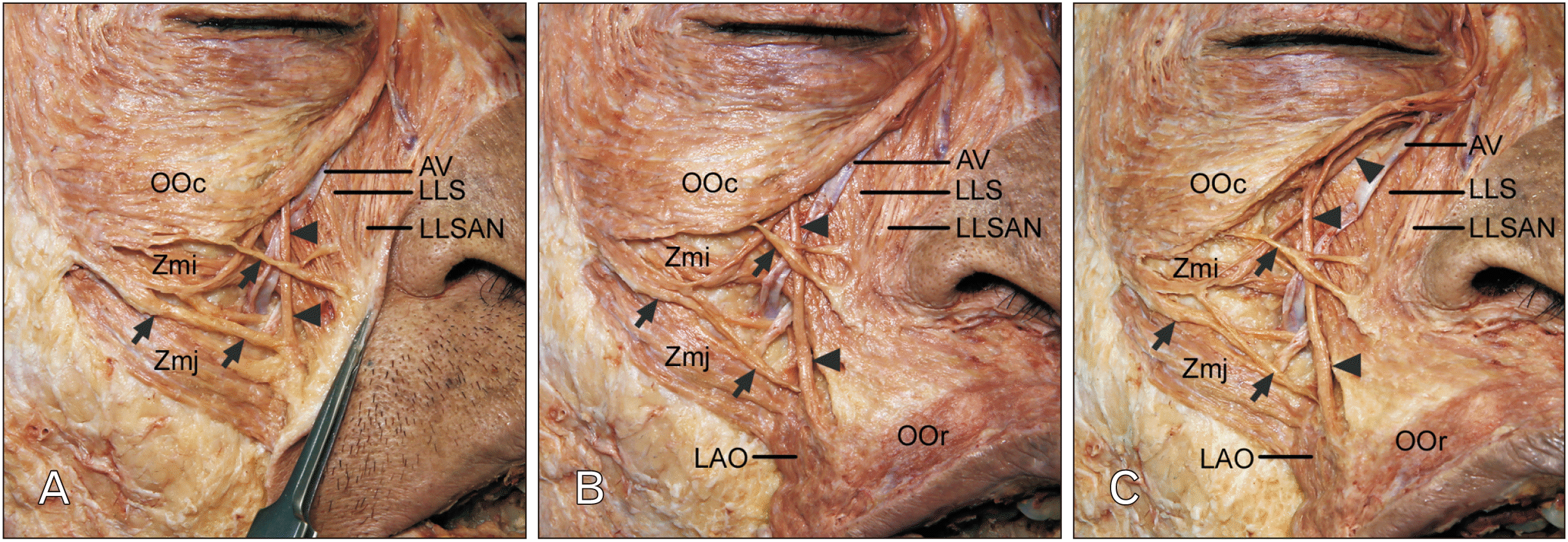Introduction
Case Report
 | Fig. 1Connecting fibers between the inferior margin of the OOc and OOr. (A) At the middle of the inferior margin of the OOc, the connecting fibers (arrowheads) descended perpendicularly and passed beneath the site between the middle and the lower thirds of the nasolabial fold. Adjacent to the connecting fibers, there were several fibers (arrows) from the OOc attaching along the nasolabial fold. Skin just lateral to the nasolabial fold was removed and the remaining skin was reflected to reveal the courses and attachments of the connecting fibers and the adjacent extending fibers from the OOc. (B) The connecting fibers (arrowheads) blended with the OOr between the inserting fibers of the LLS and LAO. The several fibers (arrows) from the OOc were toward the LLSAN, LLS, and Zmi. The remaining skin was removed to expose the entire muscles in the face. (C) The extending fibers of the OOc that divided the connecting fibers (arrowheads) were attached to the maxilla just above the origin site of the LLS. The inferior margin of the OOc were reflected superiorly to reveal the course and attachment of the connecting fibers. AV, angular vein; LAO, levator anguli oris; LLS, levator labii superioris; LLSAN, lavetor labii superioris alaeque nasi; OOc, orbicularis oculi; OOr, orbicularis oris; Zmi, zygomaticus minor; Zmj, zygomaticus major. |




 PDF
PDF Citation
Citation Print
Print



 XML Download
XML Download